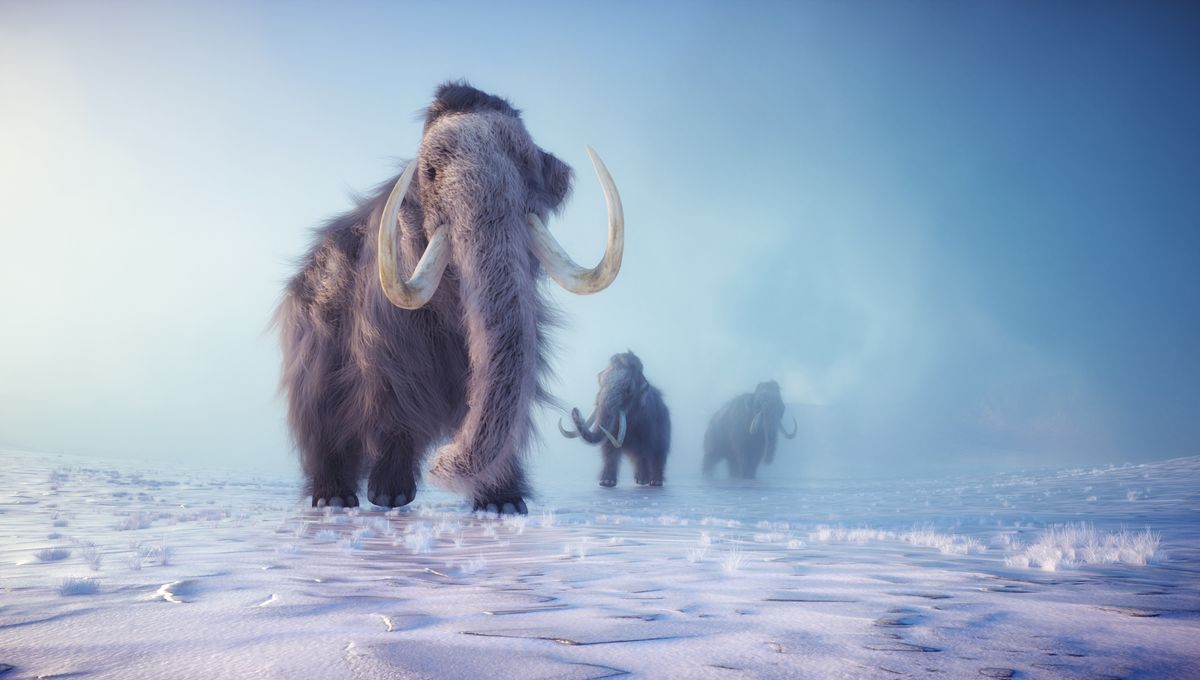
Genetic material from hundreds of mammoths is providing an unprecedented glimpse into their family tree and shows how these Ice Age giants emerged, migrated, and adapted to a changing world.
Scientists at Stockholm University and the Centre for Palaeogenetics in Sweden analyzed the mitochondrial genomes (mitogenomes) of 34 mammoths whose DNA had never been sequenced before. All of these tusked beasts lived in North America and Siberia during the Pleistocene Epoch, aka the Ice Age, but at least 11 of them are exceptionally old, dating to the Early and Middle Pleistocene over 129,000 years ago.
The researchers then compared these new mitogenomes to over 200 previously published mammoth mitogenomes, allowing them to get a wide overview of mammoths’ time on planet Earth. As suggested by previous work, it looks like mammoths from around a million years ago did not closely resemble later mammoths that became extinct just a few thousand years ago.
The research showed major branches in the mammoth family tree seem to line up with big changes in climate and population during the Early and Middle Ice Age. It points to Siberia as the original homeland for the main mammoth lineages and suggests that shifts in population size and movement played a key role in how different genetic groups emerged, spread, and sometimes fell into extinction.
The project also shows that mammoths in the Modern Late Pleistocene fell into three genetic groups, all of which shared a most recent common ancestor around 780,000 years ago. Notably, this loosely aligns with when the woolly mammoth is thought to have first appeared as a distinct species.
It then looks like a significant population bottleneck occurred around 285,000 years ago, likely reducing genetic diversity. After this, there was a burst in new lineages, possibly tied to climate changes.
“Our analyses provide an unprecedented glimpse into how major deep-time demographic events might have shaped the genetic diversity of mammoths through time,” Dr J. Camilo Chacón-Duque, lead study author and researcher at Stockholm University and Centre for Palaeogenetics, said in a statement.
In years gone by, it was very difficult to obtain good quality genetic material from mammoth remains that were over 100,000 years old, simply because DNA doesn’t tend to last that long in natural conditions. However, recent years have pushed back that boundary, illuminating some insights into the genetic universe of mammoths.
Some of the researchers involved in this new study were involved in a recent effort that sequenced ancient DNA recovered from a 1.2 million-year-old mammoth – the oldest DNA that’s ever been recovered by a long way.
“These results add to our earlier work where we reported million-year-old genomes for the first time. I’m very excited that now we have genetic data from many more mammoth specimens sampled across the last million years, which helps us understand how mammoth diversity has changed through time,” explained Professor Love Dalé, senior author at Stockholm University and Centre for Paleogenetics.
Mitogenomes are a small portion of an organism’s total DNA, found in the mitochondria (yes, the powerhouse of the cell) rather than in the nucleus. Unlike the full mammoth genome, which contains all the genetic instructions stored in nuclear DNA, the mitogenome only includes genes passed down from the mothers. It’s much smaller and simpler, but still useful for studying ancestry and evolutionary relationships, as this study shows.
“With the ever-decreasing costs of sequencing technologies, mitogenomes have been somewhat forgotten. However, our study shows that they remain crucial for evolutionary biology since they are more abundant than nuclear DNA,” explained Dr Jessica A. Thomas Thorpe, first study author and researcher at the Wellcome Sanger Genome Institute in the UK.
The new study is published in the journal Molecular Biology.
Source Link: Mammoth DNA Is Showing How These Ice Age Giants Evolved Over Past 1 Million Years